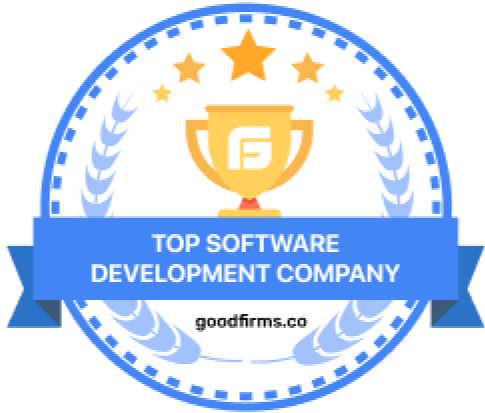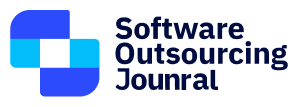Who would have thought that humans would make such progress in technology and automation that our household items would become smart and our businesses so modern and robust? With Industry 4.0 at the helm, AI-led automation, simulation, predictive analytics, and smart manufacturing have become the norm in businesses.
Since its inception in 1999, when Kevin Ashton first coined the phrase, IoT has covered a lot of ground. Development in various technologies like RFID, BLE, QR Codes, Barcodes, LoRaWAN, Wi-Fi, and the Internet has truly evolved the Internet of Things into the Internet of Everything.
The Internet of Things (IoT) has greatly impacted both businesses and homes. In business, IoT has provided a brilliant opportunity to optimize business processes while increasing productivity, revenue, and profits.
The constant connectivity that IoT enables, combined with data and analytics, provides new opportunities for companies to innovate and create products and services and increase the efficiency of operations. IoT can also help marketing businesses with targeted advertising by studying the impacts of ad campaigns and consumer interests and engagement.
Let’s explore how you can make the most of IoT development for your business.
Role Of IoT Development In Digital Transformation
Historically, the main goal of digital transformation technologies has been to replace manual processes with digital ones. For instance, documents may now be scanned and saved on a computer’s hard drive, as opposed to keeping stacks of physical copies around the office. But, of course, it gets much more complicated than that: from mobile banking platforms to replace physical banks to autonomous driving assistance systems.
In short, the influence of IoT development on digital transformation processes can be highlighted with one word—data. IoT uses many physical devices that gather valuable information from their surroundings in real time. The kind of information that you consider critical will, of course, depend on your industry—it could measure practically everything from temperature to the number of objects inside a building.
Whatever data is gathered is then transformed into a digital payload by software, encrypted, and sent to the company’s database, which is housed in its data center or in a public or private cloud. On top of that, IoT doesn’t have to be all about internal processes, it can be customer-facing, too. IoT devices can determine customer needs and increase client’s interactivity with your business.
IoT Trends Accelerating Digital Transformation
As stated above, there’s way more than one use case for IoT development in digital transformation, so let’s break down some of the most popular trends:
IoT Wearables
Wearable IoT devices enable users (employees) to quickly link with other digital devices and systems, enabling them to monitor, regulate, and assess various ongoing processes and make informed decisions;
Artificial Intelligence of Things (AIoT)
The potent union of AI and IoT can be a major driving force – thanks to AI’s use of machine learning and a variety of other cutting-edge algorithms, IoT tends to perform even better than usual. At the same time, IoT development provides AI with connectivity and data-based inputs;
Digital Twin
A digital twin is a virtual clone of real-world systems, devices, and objects that use data from IoT in real time to optimize performance. Digital twins are most frequently used in the automotive, manufacturing, and healthcare industries.
5G
Fifth-generation mobile network technology significantly demands IoT development because it makes communication quicker, more secure, and more reliable.
Internet of Behavior (IoB)
IoB is a research and development tool that tracks and monitors individual and societal human behavior. Understanding the motivation behind your target audience’s decisions can help you convert leads into deals more efficiently.
6 examples of IoT Development in the Business World
As more companies adopt this technology, we can expect to see more innovative and efficient ways of doing business in the future.
1. IoT Tracking and Monitoring
One common use of IoT technology is for asset tracking. This means using special devices to track and monitor the location and status of valuable items such as equipment, tools, or vehicles. IoT asset-tracking devices use either GPS or radio frequency (RF) technology to do this.
These smart devices can also be used for long-range identification and verification of assets. This means that businesses can easily verify the location and status of their assets without having to check them physically. This IoT development can save time and money and also reduce the risk of theft or loss.
2. IoT Sensors
Sensors are essential components in the Internet of Things (IoT) ecosystem. Simply put, they can detect changes in their surroundings and transmit this information to other devices. This allows for real-time monitoring and control of physical environments, making it possible to improve efficiency and reduce costs in a variety of applications.
IoT sensors come in different types, but they all work by collecting data from the environment and transmitting it to a central system for processing. Some sensors require human intervention to take measurements manually, while others measure different types of data automatically through digital programming. These sensors typically connect to circuit boards, such as Arduino Uno or Raspberry Pi 2, which process and transmit the data they collect.
What sets IoT sensors apart from traditional sensors is their ability to send data to other connected devices. This allows for seamless automation and control of physical environments, enabling businesses to make data-driven decisions and take action in real time. For example, IoT sensors can be used for predictive maintenance, which involves analyzing data to identify potential problems before they occur. This IoT development can help businesses avoid costly downtime and repairs while improving their operations’ overall efficiency.
3. Smart Supply Chain Management
Managing a supply chain can be a complex and challenging task. However, thanks to smart technology and IoT devices, supply chain managers can make their work much easier and more efficient.
With the help of smart routing and rerouting algorithms, managers can make more accurate predictions about their supply chain. IoT devices connected to packages can provide real-time information about their location through GPS and RFID signals. This information can then be used to make informed decisions about the supply chain, such as rerouting packages to avoid delays or congestion.
Smart supply chain management programs can reduce uncertainty risks, minimize variance, and improve profitability. These programs offer a range of features, such as inventory management, vendor relationship management, fleet management, and scheduled maintenance. These features allow managers to manage their inventory levels better, optimize their fleet, and ensure their equipment is well-maintained.
4. Smart Farming
Smart farming is an innovative approach to agriculture that uses IoT technologies to optimize various farming activities. One of the biggest advantages of smart farming is the ability to achieve precise farming, resulting in optimized production.
The worldwide market for Smart Agriculture was estimated at $13.1 billion in 2022 and is projected to grow to $20.8 billion by 2027, with an annual growth rate (CAGR) of 9.5%. With the help of IoT devices, farmers can determine the ideal time to harvest crops, create customized fertilization profiles based on soil chemistry, and monitor soil nutrient and moisture levels.
Several examples of IoT devices used in smart farming are Smart Elements, AllMETOE, and Pynco. These devices can detect weather conditions and other environmental data, providing farmers with valuable insights into the health of their crops.
The concept of smart farming has the potential to revolutionize the agriculture industry, providing farmers with new and innovative ways to boost the quality and quantity of their production. Farmers can optimize their operations, improve their yields, and reduce waste by leveraging IoT technologies, leading to a more sustainable and profitable industry.
IoT development can help farmers optimize their operations and achieve better outcomes, benefiting both them and the consumers who rely on their products.
5. Smart Bar Code Reader
Managing inventory can be a daunting task for retailers, but with the help of IoT barcode readers, it can be easier and more efficient than ever before. These devices use AI-based digital signal processing to optimize the operations of various sectors, including retail, logistics, and warehouses.
One of the most significant advantages of IoT-based barcode readers is their ability to connect with other systems via cloud data connections. Using connected barcode readers makes managing inventory a breeze.
Moreover, you can incorporate IoT barcode readers into shopping carts to make the checkout process smoother and faster. These devices use AI-based sensors to detect products as you add or remove them from the cart and automatically transfer the data to the computer. This IoT development saves a lot of time at checkout and provides customers with an improved shopping experience.
Retailers can streamline inventory management processes and optimize operations using IoT barcode readers. With its user-friendly and efficient design, the Smart Bar Code Reader is set to disrupt the future of inventory management.
6. Smart Grid
The smart grid is a technology that helps utility companies manage the production and distribution of electricity more efficiently. Using sensors and computers, the grid can constantly monitor the supply and demand of electricity in real time.
One of the smart grid’s benefits is that it allows utility companies to detect and respond to power outages quickly. By analyzing data from sensors, they can identify the source of the outage and dispatch repair crews to fix it more quickly. This helps to reduce the amount of time that customers are without power.
Another advantage of the smart grid is that it helps utility companies manage electricity distribution more effectively. By analyzing data from sensors throughout the grid, they can identify areas where demand is highest and adjust production accordingly. This helps to reduce the likelihood of power shortages and ensures that customers have access to reliable power.
The smart grid also allows utility companies to connect all of their assets, including meters and substations. By doing so, they can exercise greater control over the power infrastructure and resources. This helps ensure that the grid operates more efficiently and that customers can access better-quality energy.
Top Benefits of IoT Devices
The million-dollar question is: Why do IoT devices increase companies’ productivity? Projections indicate that there could be as many as 75.44 billion IoT devices by 2025.
Higher efficiency and innovation
IoT devices leverage the latest technologies, including Artificial Intelligence (AI), Machine Learning (ML), Cloud Computing, and Analytics. All of these can help companies break new ground and produce at a larger scale, with more speed and less risk, thus gaining a competitive advantage;
Better customer experience
IoT development is poised to tackle several challenges. It can address how customers behave, what they seek, how to personalize their journey, and ways to boost engagement and loyalty. This is achieved by collecting and analyzing data on a deeper level.
Reduced operational costs
IoT development leads to significant cost savings. It helps prevent and manage issues before they affect business, optimize workflows, and provide real-time data about market conditions and customers.
New insights and business models
With the information provided by IoT technology, companies can acquire the knowledge and confidence they need to develop and launch new products, services, and even business models (e.g., subscription-based).
Enhanced safety and security
The ability to monitor workplaces and equipment in real time using sensors and cameras makes IoT especially valuable for protecting employees, data, and machinery.
It is unsurprising that businesses are investing more and more in IoT technology – by 2030, the total volume of enterprise IoT devices will reach 18 billion. According to the International Data Corporation (IDC), the industries currently investing more in IoT development are manufacturing, professional services, utilities, and retail.
Where is the IoT Market Heading to Next?
In recent times, the IoT technology solution has moved from the pilot stage to driving business value as it plays a vital role in digital transformation.
Based on the latest statistics, this is what you can expect from loT development:
- IoT connections will grow from 19.5 billion in 2025 to 40.1 billion in 2030, reflecting a Compound Annual Growth Rate (CAGR) of 16%.
- The annual revenue from IoT connections will nearly double, rising from $21.4 billion in 2025 to over $40 billion by 2030, with a CAGR of 14%.
- Revenue from IoT data and analytics services will grow at an annual rate of 19%, increasing from $91.9 billion in 2025 to nearly $218 billion by the decade’s end.
- Next year, revenue from IoT device and application platform services will reach $116 billion and exceed $218 billion by 2030, with a CAGR of 14%.
- IoT network services will generate $2.1 billion in 2025, and this figure will more than double to $4.1 billion by 2030, growing at a CAGR of 14%.
- The revenue from IoT professional services will grow at a CAGR of 15% between 2025 and 2030, reaching $189 billion by the end of this period.
- The IoT security services market will become highly lucrative by 2030, generating $41.2 billion in revenue and a 25% CAGR from 2025.
Conclusion: Leverage IoT Development
The standard for business technology is constantly rising, and the pressure created by this rise isn’t one-directional. While there is market pressure created by the competition—i.e. if your competitor is operating with more advanced technology, they may have an advantage—employee expectations also create pressure.
High-performing employees expect to work with modern tools that improve their workflow and allow them to focus on the meat of their role rather than little repetitive tasks.
The resources required to make your product compete in the marketplace can overwhelm your core business idea, regardless of the quality of your product or the innovation of your approach. But by integrating the IoT into your operations, you can stay competitive, cut costs, and streamline processes, ultimately helping you boost your bottom line.
Want to make the most of IoT development? Schedule a discovery call.

Start a Project with Ajackus














